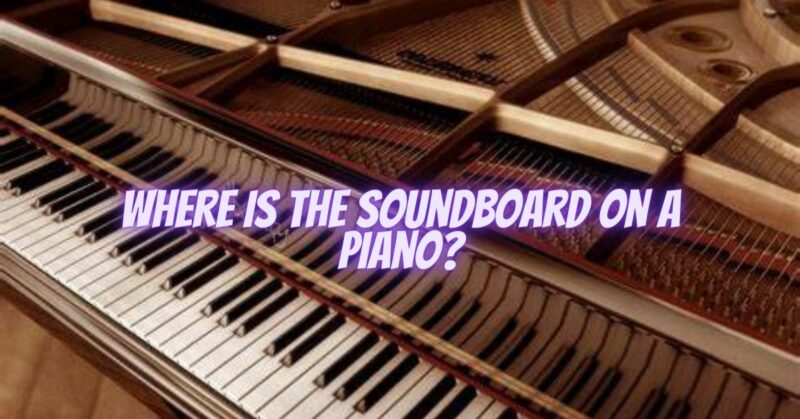When we think of a piano, we often visualize its beautiful keys and the melodies they produce. However, beneath the graceful exterior lies an essential component responsible for creating the rich and resonant tones that captivate our senses—the soundboard. In this article, we will delve into the intricate world of pianos to uncover the location and significance of the soundboard within this marvelous musical instrument.
The Anatomy of a Piano:
Before we explore the soundboard’s whereabouts, let’s briefly examine the anatomy of a piano. A piano consists of various parts, including the keyboard, strings, hammers, and the soundboard. The keyboard is the set of keys that the pianist plays, which activates a complex mechanism to produce sound.
The Soundboard’s Role:
The soundboard is a large, thin, and precisely crafted piece of wood that plays a vital role in a piano’s sound production. It is typically made of spruce, a wood known for its resonance and ability to transmit vibrations effectively. Mounted horizontally inside the piano’s body, parallel to the floor, the soundboard acts as a resonator, amplifying the vibrations produced by the strings.
Location of the Soundboard:
To locate the soundboard, we need to open the lid of the piano. Once the lid is lifted, you will see the strings running horizontally across the piano’s interior. Above the strings, extending from one end to the other, you will find the soundboard. Its position allows it to receive the vibrations generated by the strings and transform them into audible sound.
Interaction with the Strings:
The strings of a piano run perpendicular to the soundboard. When a pianist presses a key, it sets in motion a series of events that eventually causes the hammer to strike the corresponding string. This impact creates vibrations in the string, which are then transmitted to the soundboard through bridges. The soundboard, acting as a membrane, resonates sympathetically with these vibrations and amplifies the sound, producing the distinctive and rich tones we associate with a piano.
Importance of the Soundboard:
The soundboard’s significance lies in its ability to enhance the volume, projection, and tonal quality of the piano. Its large surface area ensures that the vibrations from the strings are effectively transmitted, resulting in a fuller, more resonant sound. Without a soundboard, the piano’s sound would be significantly weakened and lack the depth and richness we cherish.
Maintenance and Care:
Given the crucial role the soundboard plays, it is essential to maintain its integrity. Pianos should be kept in a stable environment, avoiding extreme fluctuations in temperature and humidity, as these can cause the soundboard to warp or crack. Regular tuning by a professional technician also helps ensure that the soundboard and other components of the piano are in optimal condition.
Conclusion:
The soundboard, hidden within the depths of a piano, serves as the instrument’s acoustic powerhouse. Located just above the strings, this delicately crafted wooden surface amplifies the vibrations generated by the strings, resulting in the captivating sounds that resonate from the piano. Understanding the soundboard’s significance allows us to appreciate the intricacies involved in creating the magical tones produced by this timeless instrument. So, the next time you listen to the enchanting music of a piano, remember the hidden treasure lying beneath the keys—the soundboard.


